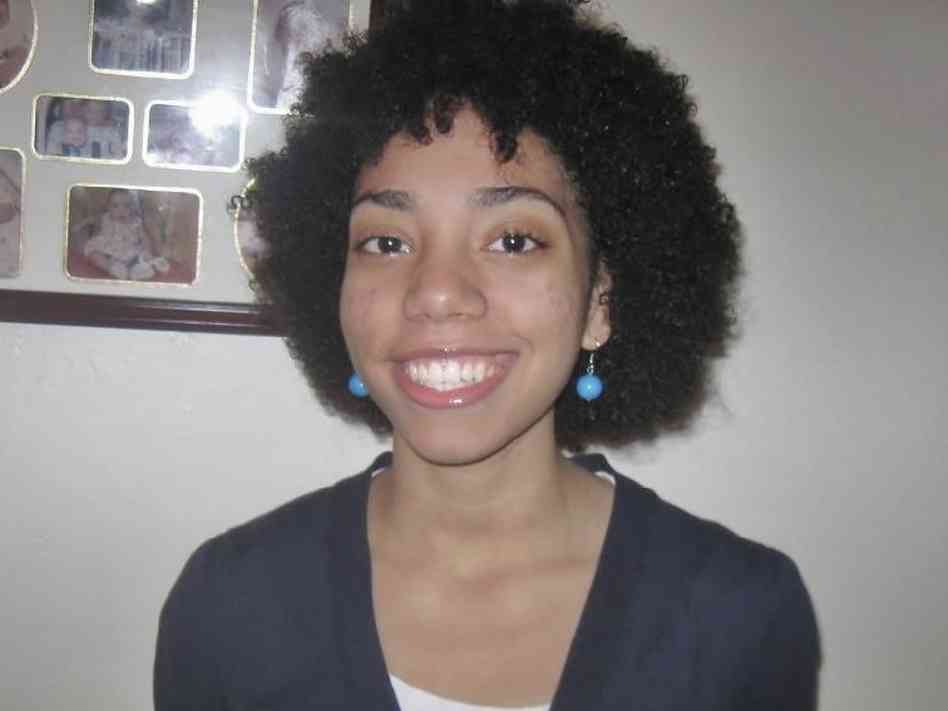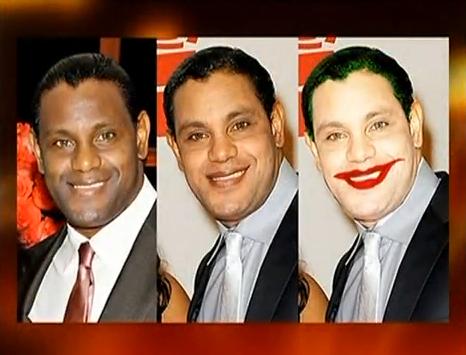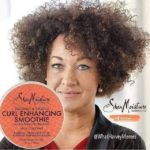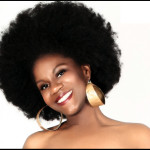When I was in college, thanks to one of my most dynamic professors, Dr. Laurence Prescott, I developed a special interest in the role of race in Latin American culture. So much so that I decided to dual major in Africana studies and Spanish language. In order to graduate as part of the honors college I had to write a thesis and decided to zero in on this topic. Since I planned on studying abroad anyway, I chose to spend a year in the Dominican Republic for my research.
Believe me when I say, it was a really eye opening experience.
Now based on what I already knew about the history of race in the Dominican Republic – I should have known that wearing my hair in natural styles was going to be a challenge. But there is nothing that I could have read or studied that would have prepared me for the types of problems that my nappy hair would cause.
Let me tell you – I’ve experienced race in a number of ways on several continents throughout my life. But I have never experienced race the way I did in that beautiful island country.
Most Americans believe that Western slavery only existed in the good ole U.S.A. They are wrong. Less than twenty percent of the Africans who were stolen during the Trans-Atlantic Slave Trade, actually made it to the United States. The vast majority were dropped off in Central and South America and the Caribbean islands.
A significant number were taken to labor as slaves in the country we now know as the D.R. Despite this fact—the history of the D.R. is such that there is a serious denial of the presence of Blackness in the ethnic makeup of the people. I write a lot about this in my book so I won’t bore you with the details here. But suffice it to say as noted by Frances Robles, writer for the Miami Herald:
Racial identification [in the Dominican Republic] is thorny and complex, defined not so much by skin color but by the texture of your hair, the width of your nose and even the depth of your pocket…And, experts say, it is fueled by a rejection of anything black.
That whole “anything black” includes natural hair. One woman cited in the article stated:
“A professional Dominican woman just should not have bad hair. If you’re working in a bank, you don’t want some barrio-looking hair. Straight hair looks elegant. It’s not that as a person of color I want to look white. I want to look pretty.”
And to many in the Dominican Republic, to look pretty is to look less black. Dominican hairdressers are internationally known for the best hair-straightening techniques. Store shelves are lined with rows of skin whiteners, hair relaxers and extensions.
Because of this sentiment, I remain firmly convinced that I would have had a completely different experience during that year abroad if my hair were straight instead of natural.
In addition to the fact that:
1) my host mother tried to sneak a perm on me,
2) a friend’s host mother bragged about the medications she took to reduce the brownness of her skin,
3) the men in my neighborhood grew fond of calling me horse hair and other names critical of my hair choices,
4) members of the local community made habit of discussing my “bad” hair out loud as I walked by, and
5) my plumber (who looked like a short Michael Jordan) informed me that his skin might be black but his soul shined white like the sun—race permeated my experience abroad.
And my hair had a lot to do with that.
As noted by Mr. Robles report:
Several women said the cultural rejection of African looking hair is so strong that people often shout insults at women with natural curls…According to Maria Elena Polanca, a woman who promotes hair-straightening products in Santo Domingo, DR, “Look, we have bad hair, bad. Nobody says ‘curly.’ It’s bad,” she said. “You can’t go out like that. People will say, ‘Look at that nest! Someone light a match!”’
Ahh yes. The Dominican Republic is a truly special place for ethnically Black looking women who wear natural hair. Which make sense. After all. This is the land where the beloved baseball player Sammy Sosa essentially pulled a Michael Jackson (R.I.P. – and we’ll always love you) and completely altered his skin color to avoid looking Black. So…there’s that.
A New Day?
This is why I was so excited to hear Elaine Vilorio’s interview on NPR. Ms. Vilorio (the young woman pictured above) is originally from the Dominican Republic and for much of her life people assumed she was Black due to her skin color and features. This was actually a source of irritation for Ms. Vilorio—until she made the decision to stop chemically treating her hair.
In a truly remarkable article written for the Huffington Post, the young Ms. Vilorio (she’s only a high school senior and seems to have a more nuanced understanding of race than many adults) explains the connections and intersections between race, culture and ethnicity.
“I’m Black. After many years in the closet, after many years of breathing that stale air of self-denial, I can finally say this.
Growing up, I dreaded the question “What are you?” I always proudly answered that I was Hispanic. In fact, I made it a point to emphasize my Hispanicity simply because I knew what was coming next. “I’m Hispanic; I speak Spanish; my parents come from Dominican Republic. I’m Hispanic. And, just to clarify, I’m Hispanic.” To this, the other person confessed: “Oh… I thought you were Black. You definitely look Black.” The problem was I perceived the identification of “Hispanic” outside the realm of Blackness…”
Evidently, once she embraced natural hair, “the change in her appearance made her rethink her roots.” She noted that:
Young girls…are brought to salons to make their hair pretty. After all, straight and pretty are interchangeable words…I had been chemically straightening my hair from a young age — six years old.
What amazes me about this young woman is that learning to love her hair played a key role in her ability to accept her Blackness. It was embracing her hair that helped her to incorporate her Blackness into the other parts of who she is. In another article she writes:
When people think of the hair texture of Hispanics, they think of luscious curls or straight, thick locks. I have no such hair textures. My hair is wild. It has tightly-coiled, barely perceptible curls. My hair is virtually equivalent to that of my [B]lack peers.
When I think back on my own personal natural hair journey I find that learning to appreciate my hair had a lot to do with my ability to appreciate myself as a Black woman. Now sure, I was fairly confident before I went natural. But for me, that one act of proactively choosing to love the part of me that society most rejected was one of the most empowering things I’ve done.
That Elaine was able to start this journey while still in high school is something that really gives me hope. After deciding to stop straightening her hair (and dealing w/ all of the typical fall out that decision can bring), this awesome young lady said:
Today, I am proud to wear my hair naturally, regardless of the sneers I get from people who first see it…Women of mixed or African descent should not be ashamed to wear their hair in its natural state. They should be proud of what was given to them. The societal pressure to have straight hair should not shape our idea of beauty. The hair-care industry makes billions by taking advantage of this insecurity, and thus, damaging the hair of women and girls everywhere.
One of the things I love about the growing natural hair movement is the sheer sense of strength that many of us draw from it. Whether you “found” yourself as a result of going natural or just realized that your hair is healthier as a result, I think we can all say that being able to tap into a growing community of women who are choosing to walk away from the standard and embrace their hair is a powerful thing.
Here’s to young sistas like Elaine—may the natural hair movement continue to be a source of support for you.






Agree! 100% to that and we’ve got a long way to go in accepting ourselves as black.
Wow! At last, after a long time of denial you finally accepted that you are Black! Thank you for sharing your story Ms. Elaine Vilorio! I hope you through your stories you can inspire others to accept who and what they are. Nice article! Thank you for sharing this to us! Keep it up!
Thanks for this article, i am dominican like elaine and i have hair exactlyyy like hers. I am pretty light have a small nose but have type 4a/4b hair and this entire article speaks the truth that no one wants to believe or say in the dominican culture, you are basically looked down upon for having afro textured hair, i am one year natural this month and stumbled upon this article and am so glad i wasnt the only one feeling like this. People really don’t understand what its like to grow up latina with hair that makes you stick out like a sore thumb in your culture as if you don’t belong. Growing up in america i totally resented myself and where i came from because of my hair, i was so young i didnt even understand that it is a beautiful thing to be of african descent. All people from all cultures are beautiful including mixed cultures. I also appreciate actress zoe saldana who was raised in DR who said in an interview she identifies herself as a black woman because she is black/ she recieved backlash for saying that a few years ago and i didnt think anything of it until now. To this day my moms friends who are also dominican will come over to our house and will ask when am i going to straighten/perm my hair. It’s sad but i hope to see a change in the future from society.
How does Sammy Sosa is a example of Dominican view/identity?
You know where exactly Sammy Sosa bleached his skin? Yes in the UNITED STATE… how he learned about it? By Black Americans who are the prime example of real Self Hate and who thought Sammy Sosa how to bleach his skin in the United States. Bleaching Skin was inve by Black American such as Madam C.J. Walker.
Thanks for your comment. Actually skin bleaching is a world wide phenomenon. The shops in the Dominican Republic sell bleaching creams (untested & unregulated for safety) by the hundreds – as do stores in Jamaica, Puerto Rico, Ghana, Colombia, Venezuela, Nigeria, India, Pakistan and anywhere else where people of color were taught to hate Black/Brown skin in order for White people to profit. Soo…Nothing special about Sammy Sosa. He’s merely one example of internalized self hatred.